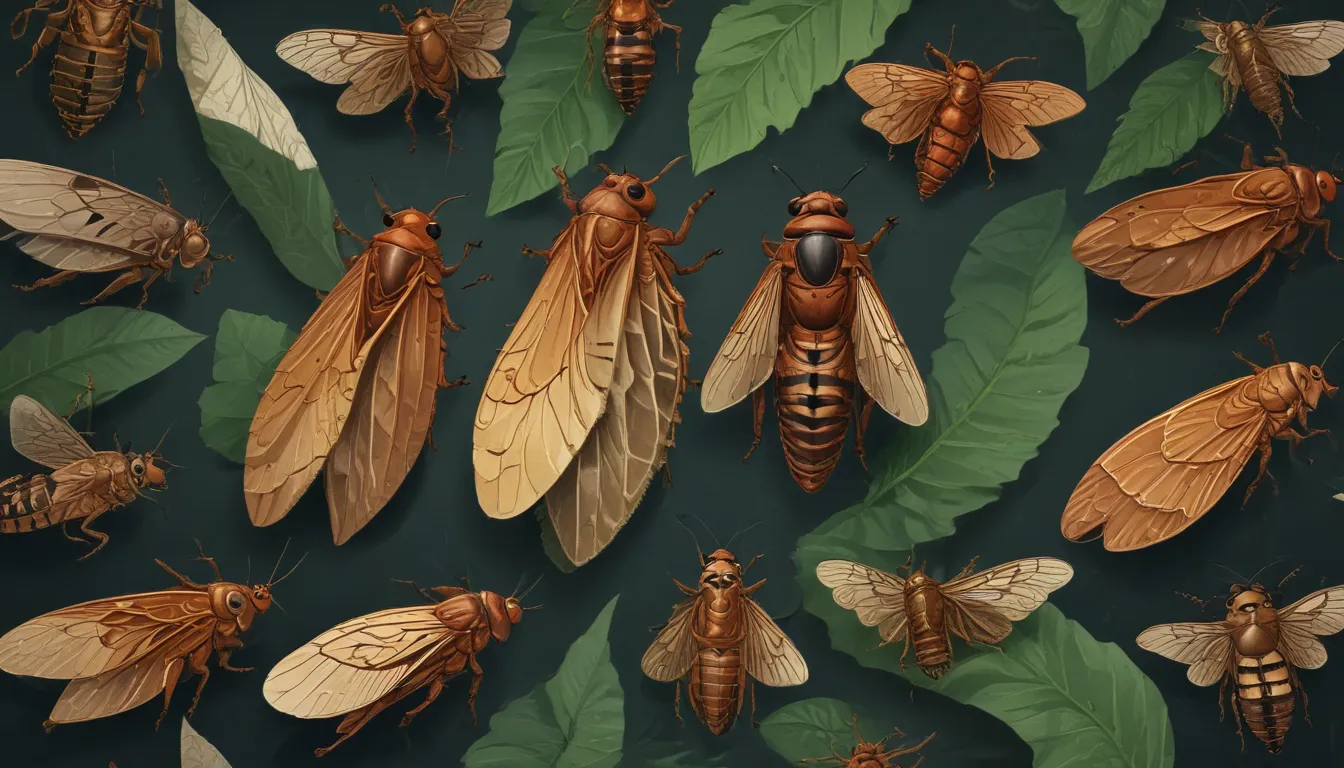The pictures we use in our articles might not show exactly what the words say. We choose these pictures to make you interested in reading more. The pictures work together with the words but don’t take their place. The words still tell you the important facts.
Cicadas are captivating creatures that have piqued the interest of scientists and nature enthusiasts alike for centuries. These noisy insects are famous for their buzzing chorus that fills the summer air. However, there is much more to cicadas than just their melodious sounds. In this comprehensive exploration, we will uncover 16 intriguing facts about cicadas that will astound you and spark a desire to delve deeper into the wonders of these fascinating insects. From their mysterious behavior and remarkable adaptations to their unique life cycle and extended periods of hibernation, cicadas offer a wealth of knowledge about the animal kingdom. So, let's embark on a journey to unravel the secrets of these captivating creatures!
Unveiling the Enigmatic World of Cicadas: A Closer Look
- Cicadas are remarkable insects with an extended lifespan, transparent wings, and a distinct mating call. They serve as a vital component of the ecosystem, providing sustenance for various animals.
- Cicadas undergo a remarkable life cycle, emerging in large numbers every 13 to 17 years. This synchronized emergence and prolonged lifespan aid in evading predators and maintaining ecosystem equilibrium.
Exploring the Basics: What You Need to Know About Cicadas
Cicadas belong to the order Hemiptera and are renowned for their buzzing sound, which sets them apart from other insects.
Cicadas have a lengthy lifespan, spending the majority of their lives underground as nymphs, nourishing themselves on sap from tree roots. They only emerge as adults once every 13 to 17 years.
The wings of cicadas are transparent and adorned with intricate veining patterns that aid them in flight.
With their large compound eyes, cicadas possess a broad field of vision that enables them to discern predators and locate potential mates.
Unlike other insects, cicadas are harmless to humans, as they lack the capacity to bite or sting. Their primary focus lies in reproduction.
Male cicadas generate loud buzzing or clicking noises to attract female partners, with these calls reaching up to 100 decibels or more.
Decoding the Life of Cicadas: An Insight into Their Lifecycle and Habits
Cicadas undergo incomplete metamorphosis, progressing through three stages in their life cycle - egg, nymph, and adult. This process is known as incomplete metamorphosis.
Found across various regions globally, cicadas are prevalent in North America, Europe, Asia, Africa, and Australia.
Certain species of cicadas exhibit synchronized emergences from the ground in large numbers, leading to the phenomenon known as a "cicada emergence" or "cicada brood."
The Multifaceted Nature of Cicadas: Their Role in the Ecosystem
Cicadas serve as a crucial food source for a myriad of animals, including birds, small mammals, reptiles, and even some humans, during their brief adult lifespan.
Boasting a diverse array of colors ranging from green to brown, black, and orange, cicadas utilize these hues to blend seamlessly with their surroundings.
Adult cicadas possess piercing-sucking mouthparts crafted for piercing plant tissue and feeding on sap.
During the process of egg-laying, female cicadas create slits in tree branches to deposit their eggs, potentially causing damage to young trees.
Delving into the Timeless Beauty of Cicadas: Their Ancient Legacy and Unique Adaptive Strategies
Fossil evidence indicates that cicadas have thrived for millions of years, positioning them as one of the oldest insect groups known to humankind.
Cicadas have adopted a distinctive life cycle strategy, characterized by prolonged periodic emergences, which are believed to serve as an adaptive mechanism to thwart predators and synchronize mating rituals.
As cicadas emerge en masse, they serve as a substantial food source for predators, facilitating the maintenance of ecosystem balance.
Embracing the Marvel of Cicadas: A Celebration of Nature’s Wonders
In conclusion, cicadas stand as captivating creatures that have enraptured the curiosity of countless individuals. Whether you find them vexing or captivating, the undeniable truth remains that cicadas play a pivotal role in the ecosystem and harbor a rich history spanning millions of years. So, the next time you encounter their resonant buzzing or stumble upon their discarded exoskeletons, take a moment to appreciate the extraordinary world of cicadas and their exceptional adaptations.
FAQ: Your Burning Questions Answered
-
Why do cicadas boast extended life cycles?
Cicadas' extended life cycles of 13 to 17 years serve as a unique survival strategy, aiding them in eluding predators and synchronizing their emergence with fellow cicadas in the same locale. -
What is the rationale behind cicadas' noisy behavior?
The loud buzzing sound emitted by cicadas serves as a mating call, with male cicadas utilizing this sound to attract females for reproduction. -
Do cicadas pose a threat to humans or plants?
Cicadas are generally innocuous to humans and flora. While their presence may be bothersome in large numbers, they do not pose a significant danger and can even benefit the ecosystem through soil aeration and serving as a food source for other creatures. -
Can cicadas inflict bites or stings?
No, cicadas lack the capacity to bite or sting, relying on specialized mouthparts to feed on plant sap. They do not possess venom or defensive mechanisms to harm humans or other animals. -
What purpose does the loud sound of cicadas serve?
The resonant sound produced by cicadas functions as a form of communication for mating purposes, aiding in attracting females and enabling males to establish territories and vie for mates.
Should you seek further enlightenment on cicadas or wish to delve deeper into the realm of these captivating insects, do not hesitate to embark on additional research or consult experts in the field.
As we unravel the enchanting world of cicadas, let us extend our exploration to the vast realm of entomology. Discover the diversity, adaptations, and ecological significance of insects through our general insect facts article. Venture into the realm of acoustics and sound waves to comprehend the utilization of vibrations in communication by cicadas and other creatures. Delve into the captivating domain of entomology, offering insights into the intricate world of these diminutive yet indispensable animals.
Let’s Connect and Learn Together
Our unwavering dedication to delivering reliable and engaging content lies at the core of our mission. Each fact shared on our platform is a product of real user contributions, enveloping a plethora of diverse insights and information. To ensure the utmost standards of accuracy and credibility, our diligent editors meticulously review every submission, guaranteeing that the facts we present are not only enthralling but also verifiable. Entrust in our commitment to quality and authenticity as you embark on an enlightening journey of exploration and learning with us.
In essence, the world of cicadas beckons with a tapestry of wonders waiting to be discovered. Embrace the intrigue, marvel at the adaptations, and bask in the timeless legacy of these remarkable insects. So, let us immerse ourselves in the captivating realm of cicadas and celebrate the boundless beauty of nature's creations.






